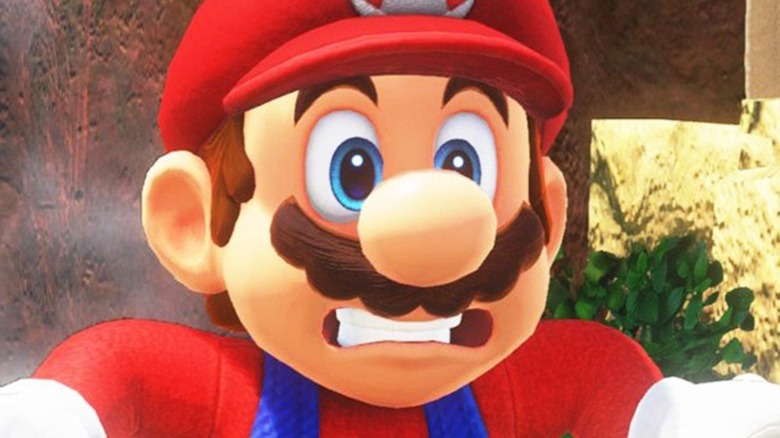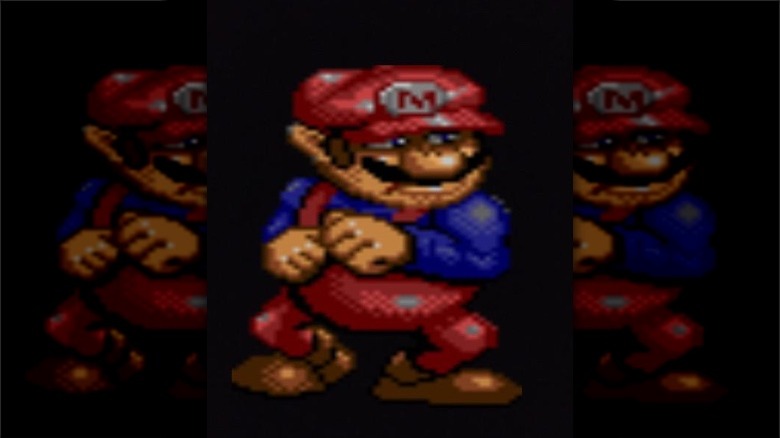Sega's Creepy Mario Easter Egg Took 26 Years To Find
It's not uncommon for Easter eggs in video games to take years to uncover, and it happens much more than you might realize. For example, "Mass Effect" fans recently uncovered an Easter egg that took nine years to find. A few months ago, an original Xbox Easter egg was found after 20 years. It's always exciting when fans find something hidden in their favorite games, and now, the Sega game "Astal" is getting some extra attention for a newly-found Easter egg of Mario that seems a bit too creepy.
The Easter egg in question was discovered 26 years after the game's release by a Twitter user named Yoshino, who dove deep into the game files for "Astal," a 1995 platformer released on the Sega Saturn (per Twitter translation). Strangely enough, Yoshino discovered a Mario sprite sitting in the files, and Mario himself looks creeped out to be there.
In a response to another user, Yoshino mentioned that they felt Mario almost looked like a parody of the actual character, which might explain why the poor plumber has an uneasy expression.
Nowadays, most gamers wouldn't think twice about seeing Mario appear in a Sega title; Mario has teamed up with Sega mascot Sonic the Hedgehog in plenty of games in recent years, most notably competing in the Olympics. However, that wasn't the case back in 1995 when "Astal" was released. In fact, things between the two gaming companies were very different.
Why it's surprising to see Mario
The latest Nintendo Direct confirmed that Sega and Nintendo are pals with the reveal that Sega Genesis games are coming to the Nintendo Switch. 25 years ago, that news would have been unthinkable. The two companies were originally major rivals, as detailed in the "Console Wars" documentary, which explored the tension between the two gaming giants in detail.
While it hasn't been confirmed that this Mario Easter egg was the result of Sega devs poking fun at Nintendo, it's hard not to imagine that the rivalry had something to do with the placement and design of this spite. Maybe the artwork was something of a silent commentary on which mascot was superior. Sega's certainly displayed its shady side in more overt ways in the past. Regardless of the reason why Mario was included in the files of "Astal," the cameo serves as an interesting reminder of how contentious the video game industry used to be.


